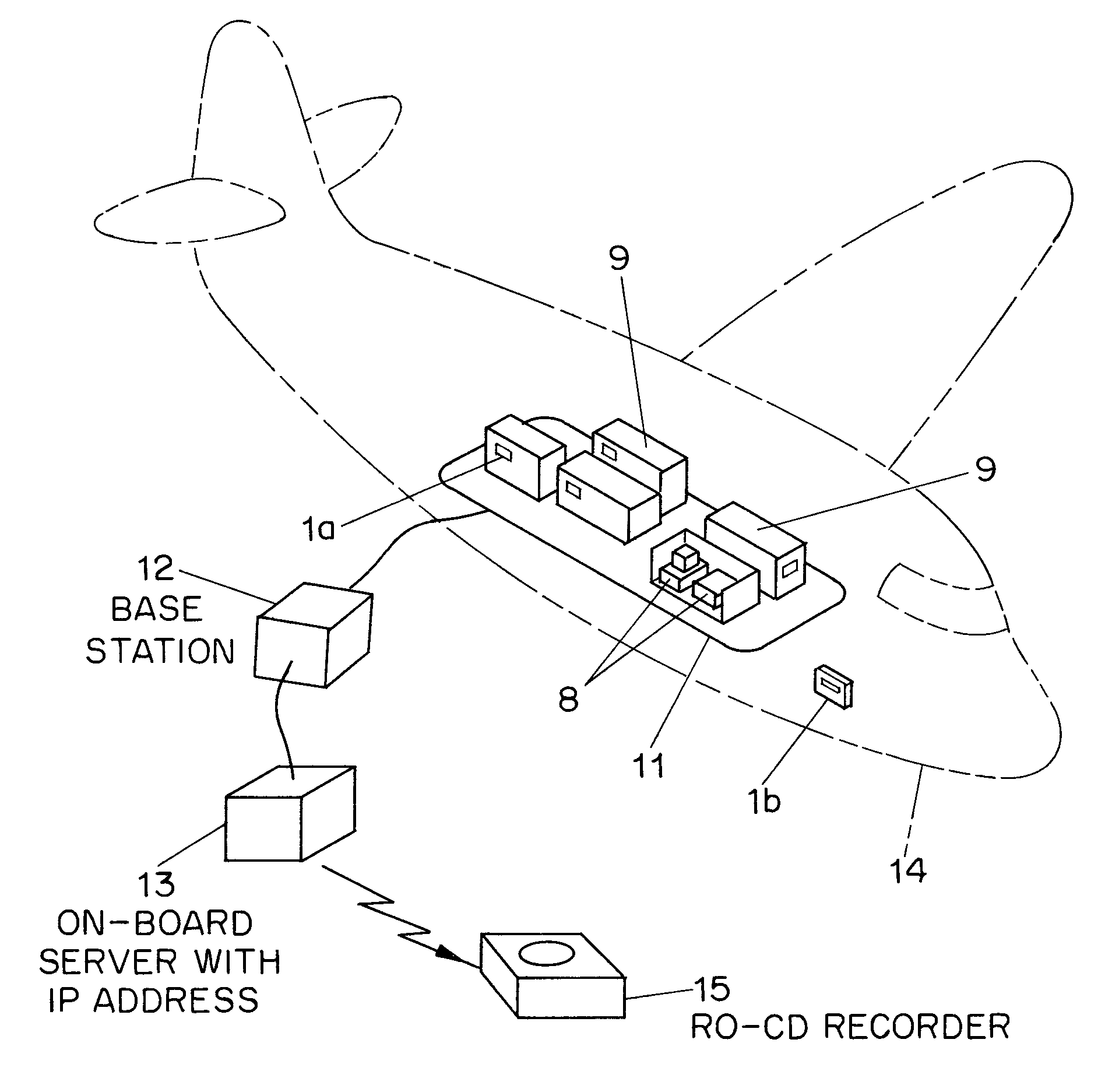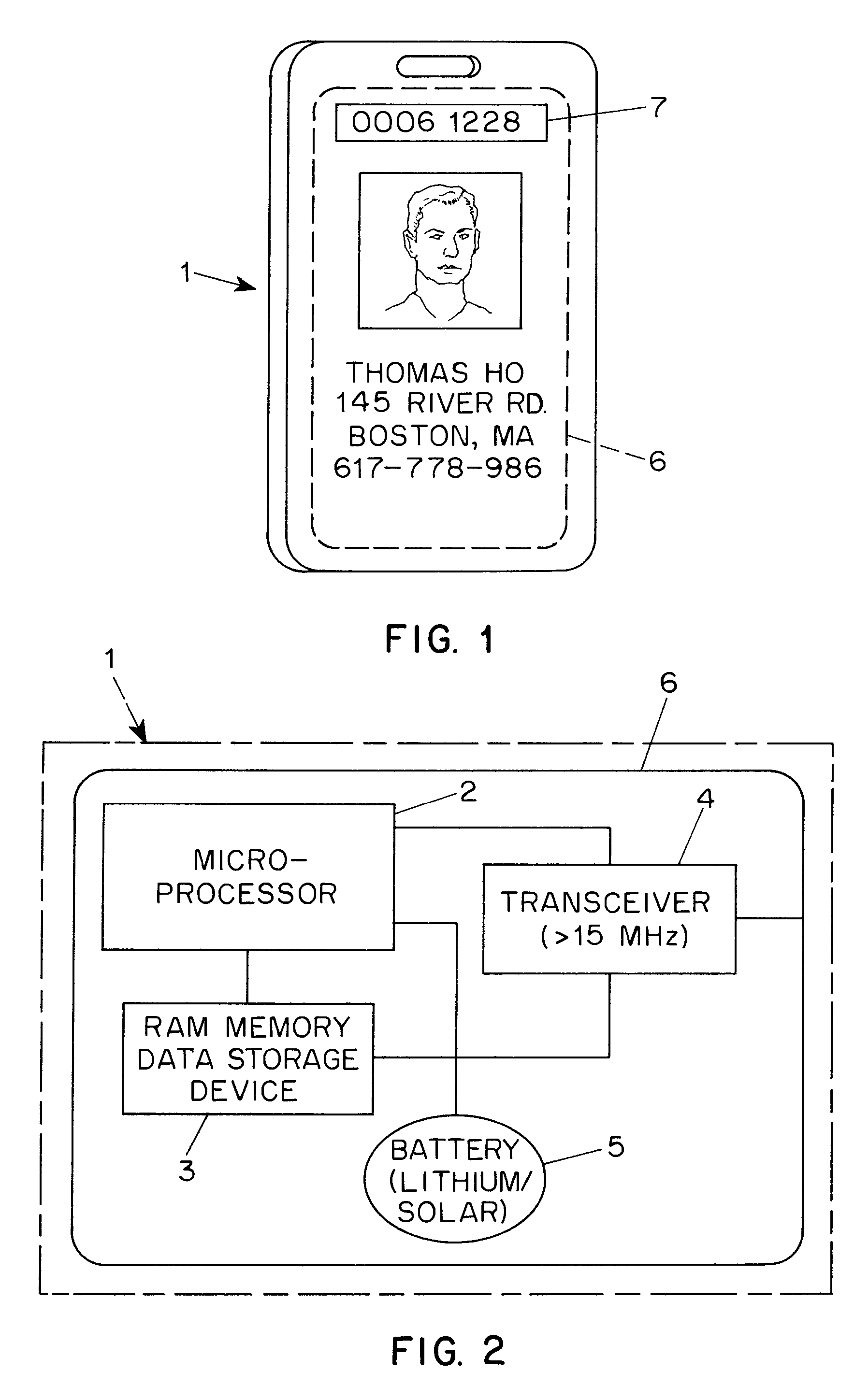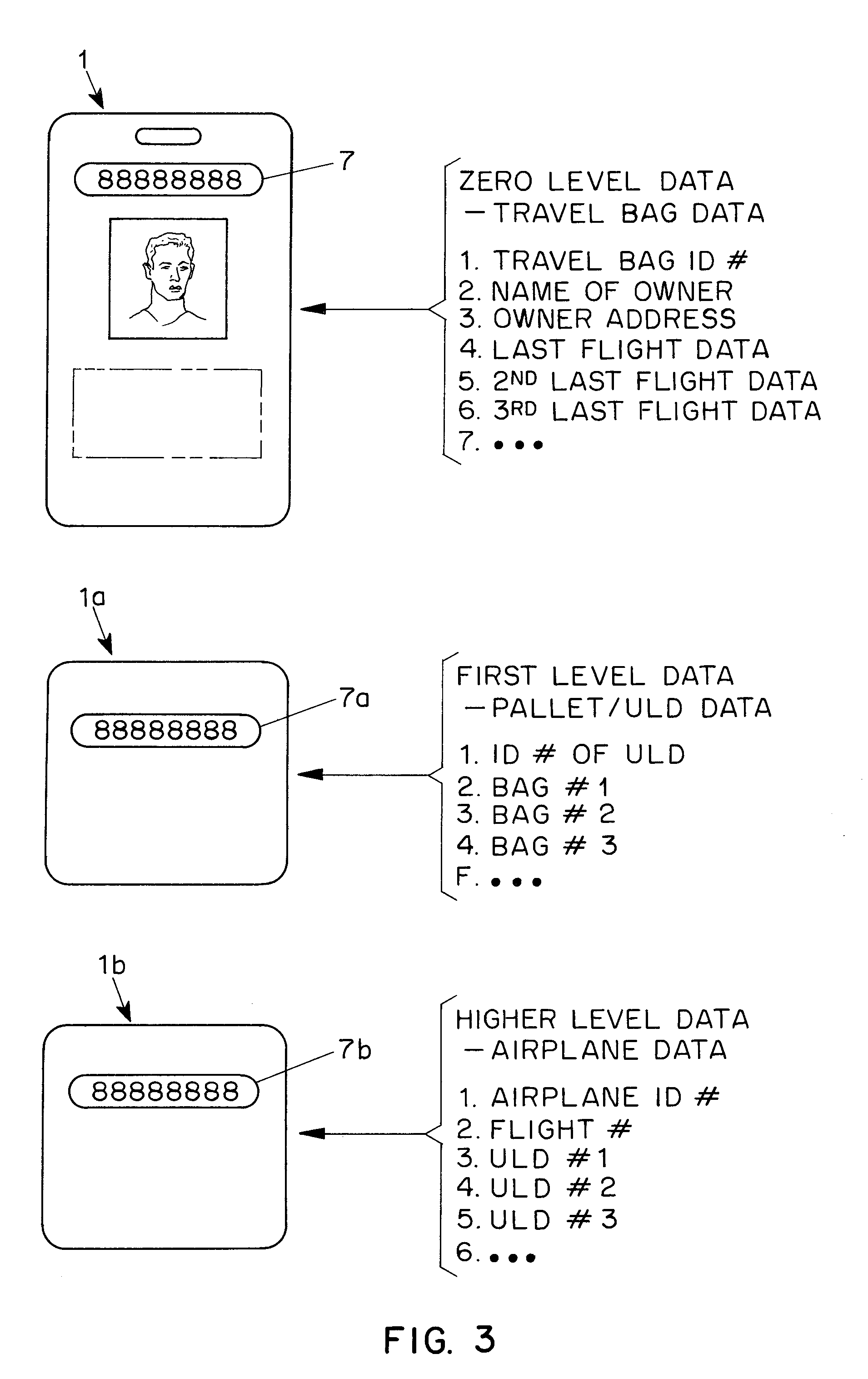RF Tags for Tracking and Locating Travel Bags
- Summary
- Abstract
- Description
- Claims
- Application Information
AI Technical Summary
Benefits of technology
Problems solved by technology
Method used
Image
Examples
Embodiment Construction
[0058] In FIG. 1, the basic RF travel bag tag 1 includes an optional liquid crystal display (LCD) 7. The LCD may be used to indicate the identifying number of the travel bag to which the tag is attached to permit simple visual inspection of the LCD 7. The tag may also be provided with a buzzer or LEDs, may be used for picking and putting specific travel bags off a pallet truck, ULD, or the like-as by sending a RF wireless signal with the tag identification code to cause the tag 1 with the specified ID code to reveal its identity by illuminating its LED.
[0059] As shown in FIG. 2, tag 1 includes a microprocessor 2, a RAM memory data storage device 3, an RF transceiver 4 that allows tag 1 to communicate wirelessly using very low radio frequency (RF), and a data storage device in the form of a lithium battery 5 for powering of all these components of the active RF travel bag tag 1. According to the present invention, this RF transceiver 4 utilizes a low-frequency of less than 15 MHz, a...
PUM
 Login to View More
Login to View More Abstract
Description
Claims
Application Information
 Login to View More
Login to View More - R&D
- Intellectual Property
- Life Sciences
- Materials
- Tech Scout
- Unparalleled Data Quality
- Higher Quality Content
- 60% Fewer Hallucinations
Browse by: Latest US Patents, China's latest patents, Technical Efficacy Thesaurus, Application Domain, Technology Topic, Popular Technical Reports.
© 2025 PatSnap. All rights reserved.Legal|Privacy policy|Modern Slavery Act Transparency Statement|Sitemap|About US| Contact US: help@patsnap.com



